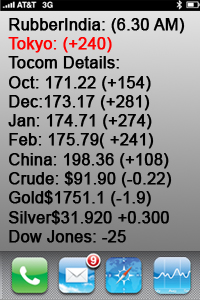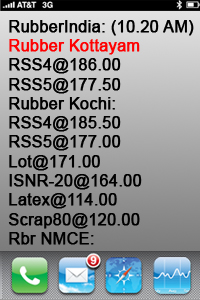February 13, 2025
Rubber India
Market Overview
Japanese rubber futures have rebounded today, breaking a three-day losing streak. The Osaka July rubber contract rose by 3.8 yen, or 1.03%, reaching 371.9 yen ($2.41) per kg. Earlier in the session, prices peaked at 381.5 yen, marking the highest level since February 5, 2025. This increase is attributed to improving demand from China, the world’s largest consumer of rubber, and anticipated supply reductions due to off-season production challenges [3].
Key Price Movements:
OSE July Rubber Contract: Up 3.8 yen to 371.9 yen/kg.
SHFE May Rubber Contract: Increased by 160 yuan to 17,695 yuan ($2,421.78) per metric ton.
SHFE February Butadiene Rubber Contract: Decreased by 90 yuan to 14,550 yuan ($1,991.35) per metric ton.
Demand and Supply Dynamics:
Demand: Downstream factories in China are gradually resuming operations, leading to a slow increase in purchasing activity. This uptick in demand is crucial as the market transitions into a period of lower production.
Supply: Foreign rubber plantations are entering their off-season production phase, which typically lasts from February to May. This period is expected to see a reduction in supply, contributing to the upward pressure on prices.
Global Trade Context:
Despite the positive demand signals, concerns loom over potential trade tensions. U.S. President Donald Trump has indicated plans to impose reciprocal tariffs on countries that levy duties on U.S. imports, which could escalate the ongoing trade war. This situation adds a layer of uncertainty to the market, particularly affecting international trade dynamics [3].
Currency Impact:
The U.S. dollar is trading near a one-week high against the Japanese yen, which makes yen-denominated assets more attractive to foreign buyers. As of the latest trading session, the dollar was at 154.33 yen.
Conclusion
The Japanese rubber market is currently experiencing a rebound in futures prices driven by improving demand from China and expected supply reductions due to seasonal production changes. However, ongoing trade tensions and currency fluctuations may influence future market stability.



